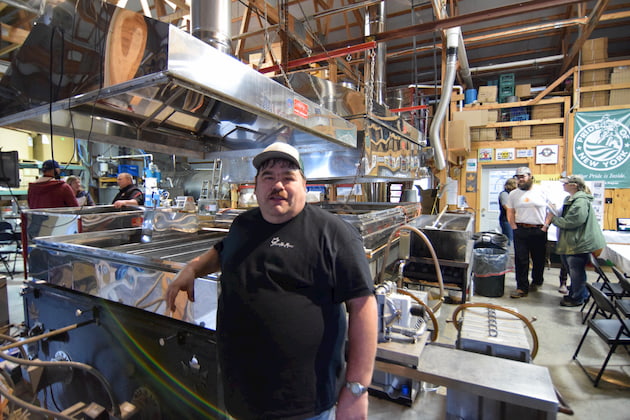Headlines
Maple booming in New York
Census says start-ups starting in big numbers
By PAUL POST, PETER GREGG | JULY 7, 2019
HARPERSFIELD, N.Y.—A newly-released USDA Agriculture Census report says maple operations increased 15 percent across New York from 2012-17.
There are now 1,662 maple businesses in the state, according to the ag census, indicating significant industry growth, which could increase opportunities for obtaining state and federal funding to enhance maple production, research and marketing efforts.
“Am I surprised to learn it? Not at all,” said Keith Schiebel, coordinator of the New York State Maple Producers Association’s annual open house weekends and the Mid-Winter Classic maple show in January. “Before, a lot of people supplemented their farm incomes with maple. Now you’re seeing more and more people making their livelihood solely on maple. It’s not just a seasonal thing anymore.”
“Several years ago a study was done that said only 2 percent of the trees that could be tapped are actually in production in New York,” Schiebel said. “So there’s tremendous room for growth. Couple that with improved technology for increased yields, and people can get a much quicker return on investment from maple than many other types of agriculture.”
As more producers come on board, firms that manufacture and sell maple equipment benefit, too.
Maple association president Tony VanGlad of Gilboa, N.Y. said the organization encourages all maple producers to fill out Census surveys, which may account for some of the reported 15 percent growth in the latest five-year period. The bigger number “gives us a larger voice to apply for federal grants for maple research,” he said.
For example, USDA Acer grants fund a variety of initiatives to support the industry.
Although Cornell University’s maple research program did obtain such money last year, New York hasn’t gotten as much as some other states such as West Virginia and Vermont.
“Maybe with this new report will be able to get some of this funding,” VanGlad said.
Dwayne Hill, of Harpersfield, N.Y. is on the association’s executive and legislative committees and also owner of Shaver Hill Maple, a big dealer in the Catskills. He said he’s seen more than a dozen new producers get into the business in his area alone during the past few years.
“A lot of them are small, backyard producers, but there are more and more people getting into it,” Hill said. “It’s something people can do with their families. The association has done a good job promoting our industry so that helps people want to get involved.”
And every small business has the potential of becoming a bigger one. Hill said he wouldn’t be surprised if the next Census Report, five years from now, shows even more industry growth in New York state.
“We have the whole world to market to,” he said. “I fell there’s room for all of us. Our main competition is the imitation stuff made from corn syrup.”
Schiebel said the industry can continue growing because of the many ways maple is marketed now. “It’s not just syrup any more,” he said.
“There’s a lot being done to market maple as a natural sweetener and as a flavoring for many different products, including alcohol.”
Last Aug. 27, a first-ever Maple Day was held at the Great New York State Fair, in Syracuse, which introduced visitors to many different types of value-added products such as maple creams, candies and nuts. Cooking demonstrations using pure New York maple syrup were also held.
Schiebel said these types of activities also do a great deal to spark people’s interest in becoming a maple producer.
Likewise, he’s involved with the Ag in the Classroom Program that gives kids a hands-on introduction to maple by allowing them to set up a school yard sugarhouse. Students partner with local producers and submit their products for judging at the State Fair.
“It’s in about 100 schools now,” Schiebel said. “I would definitely predict that industry growth will be the trend. Maple is definitely on the governor’s radar as a growth industry for agriculture.”
New York’s maple industry hit a 74-year record in 2018 with the production of 806,000 gallons of syrup, and production grew by nearly 50 percent from 2014-18.
This year’s state budget included $64,000 for a new mobile maple exhibit that will travel throughout New York, going to schools and fairs. It’s hoped that the exhibit will be ready for this year’s Maple Day at the State Fair, on Aug. 26.
“It’s a very effective way to educate people,” said Helen Thomas, the Maple Producers Association executive director. “The state has always been very receptive to us. I’m thrilled with the response we’ve gotten from legislators, the governor and Department of Agriculture and Markets.
Everybody in Albany has been very supportive of maple. It’s becoming a very important specialty crop in New York.”
































